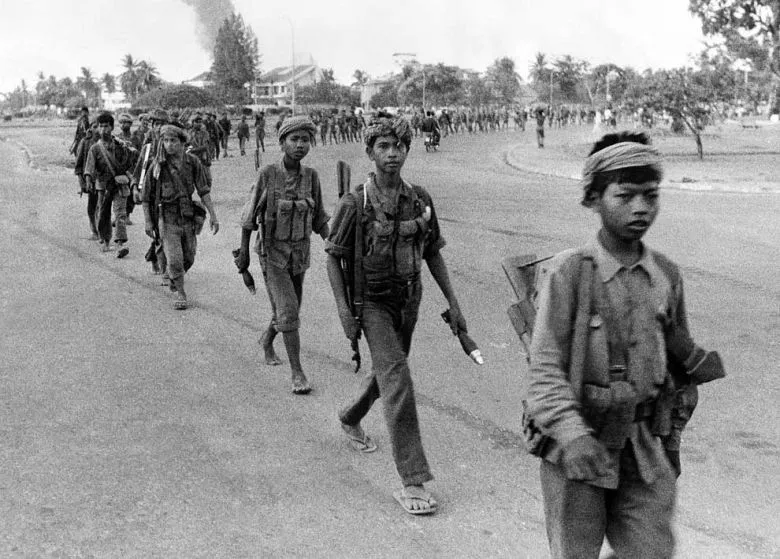Book Review: Thai Foreign Policy 1932 - 1946
- Al Johnson

- Feb 8, 2019
- 4 min read
Updated: Aug 2
Few English-language books deal with Thailand's history during the 1930s, and almost none critically examine the nation's foreign policy during its early democratic stages. Thai Foreign Policy 1932-1946 by Charivat Santaputra seeks to fill that gap.

In 1932, Siam (later Thailand) transformed overnight from an absolutist monarchy to an embryonic democracy. The nation had spent nearly a century balancing between the aggressive colonial invasions of Britain and France, which by 1910 had taken over 80% of Siamese territory.
In 1932, the new democratic government would have to balance the fear of foreign invasion by the colonial powers in response to the new government. So the tension of maintaining the status quo and charting new courses began without traditional royal institutional support. A third (Japan) would soon join the two colonial powers.
Thailand sought to modernize and establish Thai ownership in its 99% foreign-owned industry without upsetting those foreign powers. How Thailand balanced these conflicting forces is one of the topics Santaputra attempts to answer.
The other topic that rose later in the decade was how to maintain neutrality or choose a side among the three aggressive colonial states on the eve of WWII, and how to deal with France when it became a Nazi ally after its defeat in June 1940.
These tumultuous events before and during WWII provide unique case studies in Southeast Asian diplomatic and historical studies.
"The main issue, once the crisis of recognition was past, was the threat of foreign intervention."
Adapted from a thesis paper, Charivat Santaputra's book unfortunately displays rather large errors in its presentation of regional and international political situations. Despite the shortcomings in accurate details and narrow ideological bias, Thai Foreign Policy 1932-1946 does provide a good starting point for students wishing for a broad overview of the subject, considering the lack of other foreign affairs-focused material in English.
Overview
The book published by the Thai Khadi Research Institute at Thammasat University in 1985 provides an adequate historical context of Siamese foreign policy during the absolutist monarchy years before the 1932 revolution. Placing the difficulties Siam had with the European occupying powers on all of it' borders, as well as the generational struggle to remain free from overt colonial control is essential in understanding both the challenges and domestic paradigm that was the foundation for decisions made in the years before, during, and just after the Greater East Asian War (known as WWII in America, France, and Britain but not Thailand).
Without a clear understanding of the diplomatic struggles, dead ends, and harsh capitulations in dealing with the Western powers historically, the events of 1932-1946 can not be understood clearly.
However, while including these contextualizations in the 460+ page book is admirable, some notable errors could be from a lack of information at the time.
One example: on page 97, when discussing the foreign policy during World War I, Santaputra states, "Britain and France both wanted her to join on the side of the Allies, which she eventually did. The Siamese reaped their benefit to the fullest." This contextualization provides an oversimplification and an entirely inaccurate picture of Siam's entry into the war, the Allies' attitude, and the diplomatic gains from the outcome.
For starters, the Allies were ambivalent about the Siamese entry into the war. British officials such as Herbert Derring at the Foreign Office in London opposed it as it would mean increased French influence at the expense of the British. Even when the Siamese entered the war, they could not profit as much as they believed due to the challenge of the German confiscation of property by England and the higher costs of an expeditionary force than planned.
Unfortunately, World War I is not the only inaccuracy; the period in question, 1932-1947, is rife with errors, especially when dealing with international relations and internal social and political mechanisms that were at play during the period.
The appeal by Phibunsongkhram to the US and UK before WWII to balance the ascendancy of the Japanese in neighboring Indochina is not mentioned. Nor is the fact that France, in July of 1940, became Vichy France and was a Nazi German ally. Thailand's war with France was against a Nazi German ally, not the French nation that had been aligned with Britain. Also omitted is the long process of negotiation that preceded the armed conflict, as well as the fact that the French did indeed rescind the initial diplomatic agreement and resorted to firing first in the escalation. Finally, in 1943, Phibunsongkhram sent diplomatic feelers to the nationalist Kuomintang to attempt to work a deal with the Allies against Japan, whom Phibun felt were leading Thailand to ruin.
Thailand's Foreign Policy 1932-1947 should be read knowing that it contains such errors and more. Until another writer takes up the challenge of writing a focused foreign policy book during this period, it should be read adjacent to such excellent works as Stephen Hell's Siam and World War I an International History, his Siam and the League of Nations, Direk Jayanama's Siam and World War II, and Stephen Brailey and Craig Reynolds works to provide ready fact checks and balances.





Comments